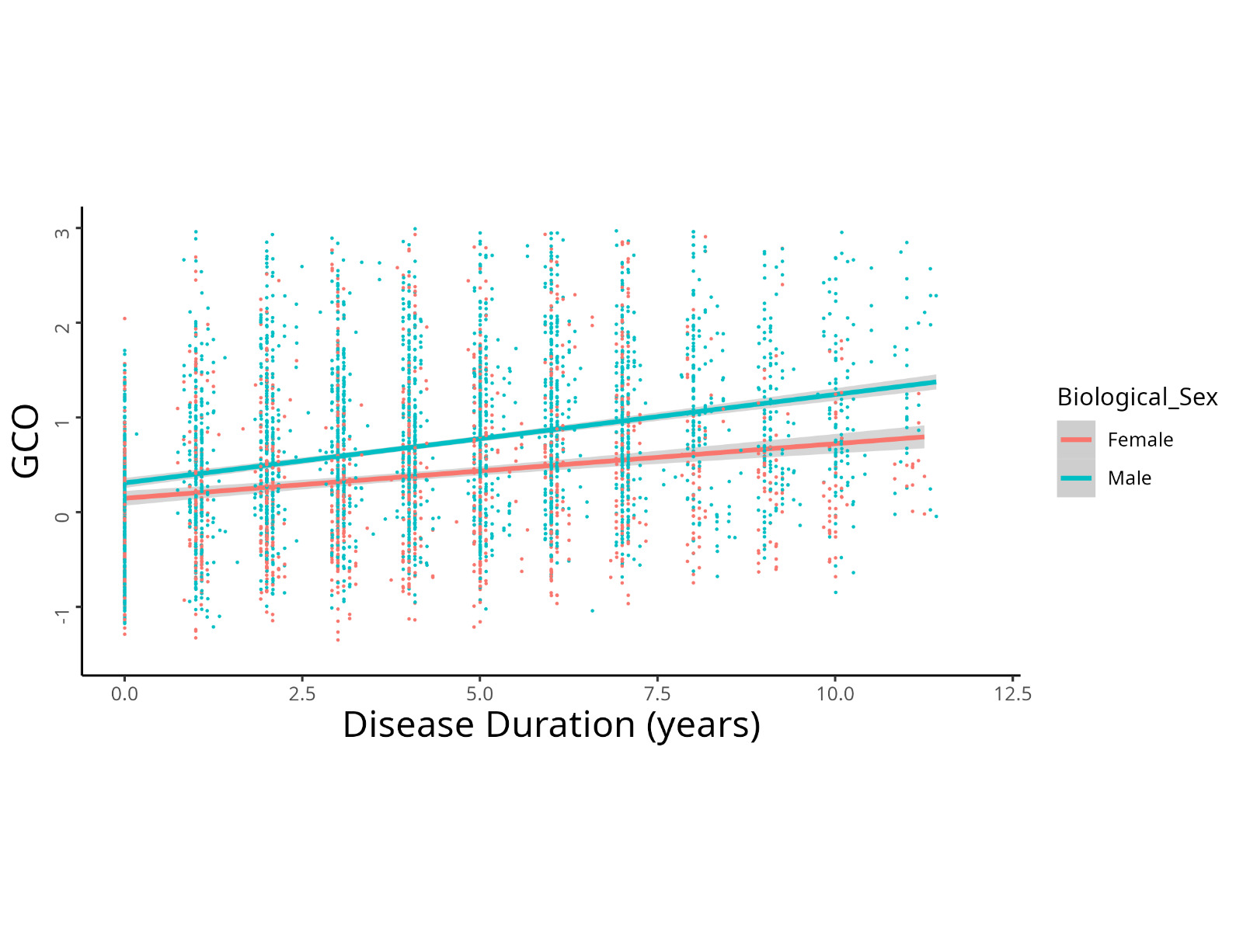Category: Parkinson's Disease: Pathophysiology
Objective: To investigate differences in clinical subtypes, biomarkers, and course of progression in Parkinson’s disease (PD) between the two biological sexes.
Background: PD is a heterogeneous neurodegenerative entity with remarkable variations in clinical manifestations and course of progression from case to case. The NIH has highlighted the importance of biological sex as a crucial variable for further investigation, with a potential role in the heterogeneity of PD.
Method: Data on 421 individuals (276 men, 145 women) with de novo PD was retrieved from Parkinson’s Progression Markers Initiative (PPMI) [1] cohort including extensive longitudinal data on motor and nonmotor manifestations, and biomarkers. Using a multi-domain subtyping method, we classified PD population into three subtypes: “mild motor-predominant”, “Intermediate” and “Diffuse malignant” [2]. The average duration of follow-up was 7.7 (SD=3.5) years. We compared longitudinal course of progression in motor, non-motor and global composite outcome (GCO) between the two sexes as well as the baseline CSF, serum and imaging biomarkers. Mixed effect models adjusted for baseline age were used to evaluate between-sexes differences in longitudinal trajectories of the outcomes of interest.
Results: There was no difference in the age of onset between men and women (60.2 vs 61.6 yrs, p=0.187). The ‘diffuse malignant’ subtype was more common in men (14.9% vs 9.7%, p=0.019). Men experienced a more rapid progression in motor signs (further increase in UPDRS-III by 0.6 score/year, p<0.0001), non-motor symptoms (further increase in UPDRS-I by 0.2 score/year, p<0.0001), and the GCO (further increase in z-score by 0.05 /year, p<0.0001) (Figure 1). A higher level of serum IGF-1 (141.5 vs 128.0, p=0.017), lower CSF amyloid-beta (363.1 vs 384.3, p=0.042), and higher CSF NfL (108.1 vs 91.2, p=0.041) were found among individuals who were biologically male.
Conclusion: We demonstrated a remarkable sexual dimorphism in clinical subtypes, various biomarkers, and course of progression of PD. Biologically male individuals are more likely to manifest as ‘diffuse malignant’ subtype, with a faster course of progression in both motor and non-motor features. These clinical differences are supported by variations in plasma and CSF biomarkers.
Figure 1
References: 1. Marek K., Jennings D., Lasch S., Siderowf A., Tanner C., Simuni T. The Parkinson progression marker initiative (PPMI) Prog Neurobiol 2011; 95: 629–635.
2. Fereshtehnejad SM, Zeighami Y, Dagher A, Postuma RB. Clinical criteria for subtyping Parkinson’s disease: biomarkers and longitudinal progression. Brain 2017; 140(7): 1959-1976.
To cite this abstract in AMA style:
SM. Fereshtehnejad, H. Azizi, J. Lökk, Y. Zeighami. Sexual Dimorphism in Clinical Subtypes, Biomarkers and Disease Progression of Parkinson’s Disease [abstract]. Mov Disord. 2024; 39 (suppl 1). https://www.mdsabstracts.org/abstract/sexual-dimorphism-in-clinical-subtypes-biomarkers-and-disease-progression-of-parkinsons-disease/. Accessed April 20, 2025.« Back to 2024 International Congress
MDS Abstracts - https://www.mdsabstracts.org/abstract/sexual-dimorphism-in-clinical-subtypes-biomarkers-and-disease-progression-of-parkinsons-disease/

